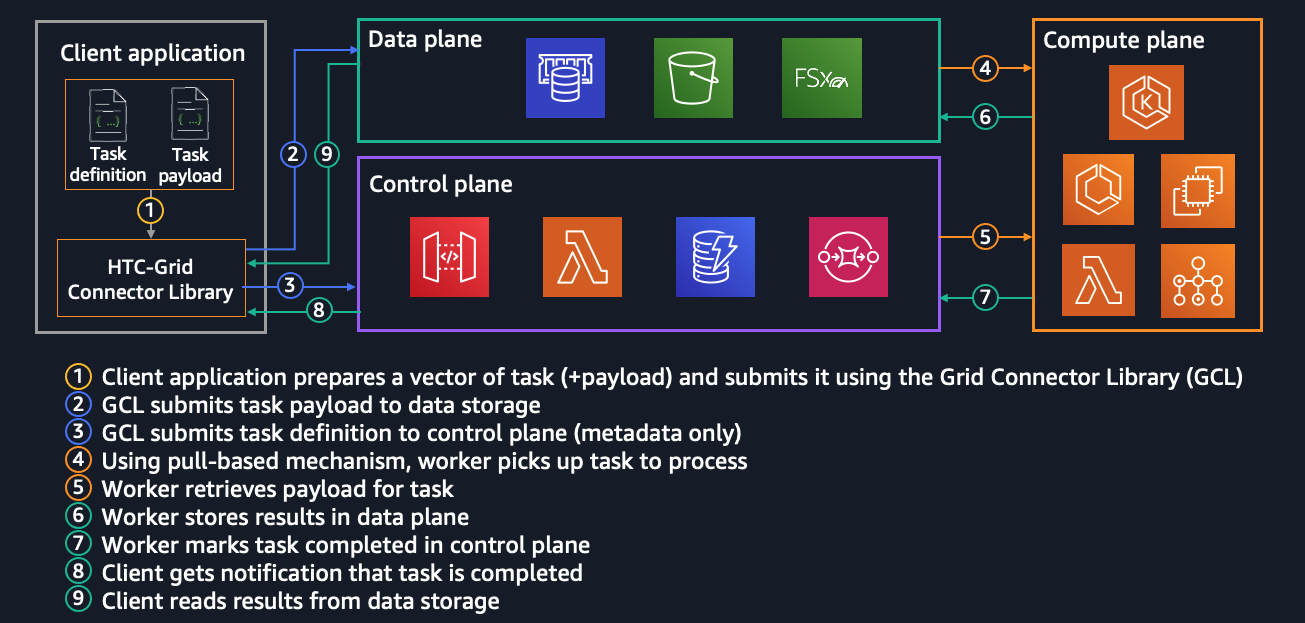High Level Architecture
High Level Architecture

HTC-Grid has been designed with strong focus on the following tenets: use of cloud native serverless and fully managed services, performance & scalability, availability, cost optimisation, and operational simplicity.
The grid system is composed of 4 functional components:
- HTC-Grid Connector Library: A language specific API that provides an entry point for Client Applications to interact with the grid.
- Data Plane: Provides a channel to store submitting jobs’ definitions and payload and retrieving computational results, it is intended to be configurable so different workloads can use their preferred Data Plane channel/service based on the workload needs
- Control Plane: This is the equivalent to the scheduler component. It keeps track of the task’s execution, grid scaling and error handling.
- Compute Plane: Provides a pool of Computing Resources that perform computational tasks.
At the moment HTC-Grid Compute plane does only provide an EKS Implementation. The intent of the HTC-Agent that runs on the compute plane is that it can be migrated to support other compute planes
Inter module communication is implemented using standardized AWS APIs which facilitates independent development and provide further customization options.
Internally, each of the 4 functional components (API, Data & Control Planes, and Compute Resources) are built using exclusively cloud native building blocks such as: serverless functions and fully managed services. These blocks require no human maintenance (zero administration), are highly available by design, and can scale horizontally in response to demand.